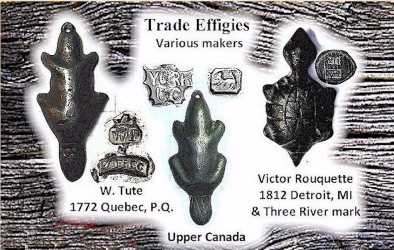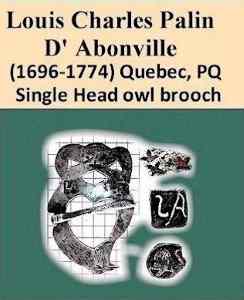
ASSOCIATION OF SMALL COLLECTORS OF ANTIQUE SILVER
ASCAS
| article # 223 |
|
|
|
|
by Steve Cox
(click on photos to enlarge image)INDIAN TRADE SILVER IN THE AMERICASIt is a complex field of interest, and few people invest the time required to educate themselves in the field of collecting. It takes years of intense research and hands on detailed examination of collections to become proficient just in authentication. Knowledge in metals, manufacturing techniques, trade history, cultural association, maker marks, and much more is required before one may find it safe to collect trade silver with any degree of success. To further complicate collecting trade silver it has no relative value, almost every piece is unique. With that said, like other rare collectables the vast amounts of counterfeits and authentic reproductions on the market can still lead to heart breaking moments. Although some authorities use 1543, the year Jacques Cartier first sailed in to the Gulf of St. Lawrence as the origin of trade silver it was very limited. For our beginning date we will use 1605 when James Town was funded. This is a viable reference point leading up to significant trade in Northeast America. Soon after Jamestown was founded significant advances in trade evolved and large amounts of trade silver adornments were made specifically for trade with Native Americans. Large amounts of these articles were being given as awards for loyalty, presentations at treaties and in trade negotiation. All of this leads to a rapid spread and distribution of trade silver from the Gulf of St. Lawrence in the north to Alabama in the south, and from New England in the east to Wisconsin in the west. The earliest pieces came from Europe with the explorers and traders, and then gradually the manufacture of trade silver started flourishing in the Americas. Trade silver was primarily made by silversmiths, goldsmiths, pewtersmiths, clock makers and armorers, by makers from France, Great Britain, Canada and the Colonies. Later a large portion of trade silver was made by Native Americans and traders themselves. Originally items were made from European patterns and later items were fashioned after things held in high regard by the Native Americans. Such patterns included bow and arrows, clan and game animals. Also there were many patterns from Europe that became very highly prized with the Native Americans such as hearts, crosses, Masonic symbols, and a small number of mythical animals. Trade silver can be found in many forms including brooches, gorgets, medals, effigies, wrist and armbands, beads, rings, combs, hair plates and lockets. Many trade silver pieces went unmarked for a lot of different reasons, but now with expert research many of the marks found on specimens have been identified. Even today there are maker marks found on many pieces that are yet to be identified. Collecting trade silver is not for the casual weekend collector, but for the few that spend the required time, research and money it can be one of the most rewarding experiences in modern collecting.
|














